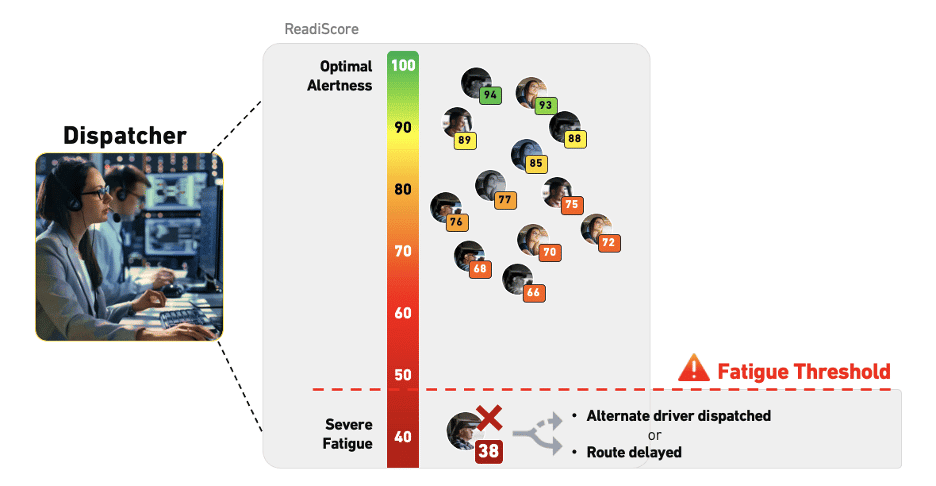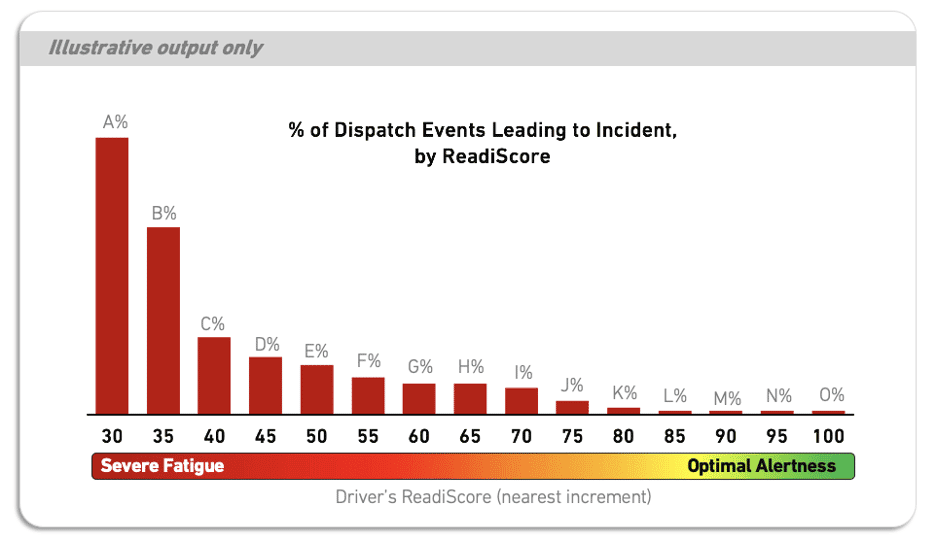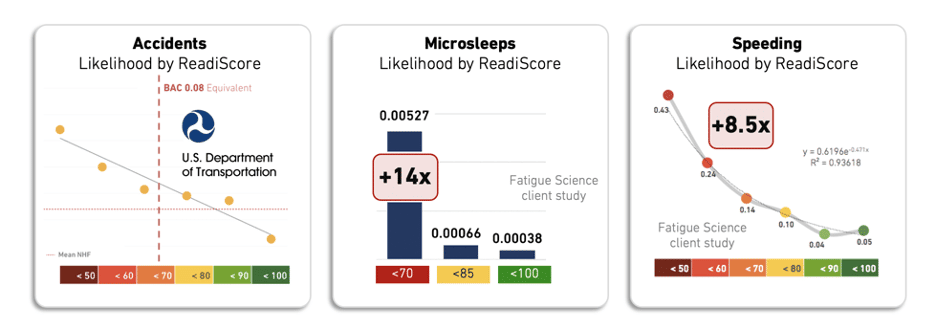17 Nov 2022 Machine Learning breakthrough predicts truck accidents and fatigue from ELD data, improving fleet safety records

Recent advances in Machine Learning are enabling trucking fleets to predict each driver’s probability of getting in a fatigue-related accident on any upcoming shift—before the driver gets behind the wheel.
With this technology, fleets can flag extreme fatigue risks to dispatchers, and, in rare but critical instances, substitute alternate drivers to avert accidents. The use of this predictive technology has the potential not only to improve safety records, but also to improve fleet efficiency and lower insurance costs.

ReadiDispatch, a Machine Learning platform from Vancouver-based Fatigue Science, combines multiple technologies to make daily accident risk predictions for each driver. Data from Electronic Logging Devices (ELDs) are one of several critical inputs to this algorithm. While ELDs have become mainstream for fulfilling Hours of Service (HoS) regulations, fleets have nonetheless found that their accident rates remain stubbornly high.
Put simply, fulfilling HoS requirements is not enough to eliminate the tens of thousands of truck accidents that continue to cause injury, death, elevated costs, and high insurance rates for fleets of all sizes. With the National Highway Traffic Safety Administration has estimating that drowsy driving costs an estimated $12.4 billion annually for US fleets, it is no surprise that 97% of fleet owners report being concerned about driver fatigue.
The Machine Learning data revolution offers the opportunity for fleets to do much better.
Now, fleets can predict and prevent critical cases of driver fatigue with much higher precision than is achievable from HoS compliance alone.
How It Works
To start, ReadiDispatch forms a personalized estimate of each driver’s sleep history for the 10 days preceding each upcoming shift. The driver’s unique ELD data inform the available windows of sleep opportunity, and critically, ReadiDispatch’s Machine Learning algorithm personalizes the estimates of the actual sleep obtained by each driver.
Estimates are personalized in terms of sleep quality, sleep quantity, and the times of sleep onset and wake, using an unparalleled “training data set” to calibrate results. The ML training data is comprised of over 4 million de-identified sleeps recorded by shift workers’ wearables around the world. (Wearables are not required for fleets to use ReadiDispatch). The ML model then combines each driver’s ELD data, demographics, and one-time intake survey responses, and compares them to the training data which has similar tags. The result is a rolling, personalized 10-day sleep history for each driver, ahead of every shift.
Finally, ReadiDispatch passes each driver’s estimated sleep history into SAFTE™, the world’s leading biomathematical fatigue model. SAFTE was developed by the US Army and is validated by the US Dept. of Transportation, FAA, and many others. The model produces an hour-by-hour 0-to-100 fatigue prediction for each operator, known as the ReadiScore.
Predicting Accident Likelihood from Fatigue Level
Retrospective analyses can examine the rate of accidents that have occurred on duty according to the corresponding ReadiScore at the time of operation. A chart like the one below will reveal unique insights into fatigue’s role in your fleet’s safety record, and will inform a cost-benefit analysis for establishing a “permissible driving threshold” above a certain ReadiScore. The analysis will quantify the expected trade-off between accident reduction and the expected frequency of driver substitution.

What can your fleet expect to find?
Each fleet’s dynamics are unique, so results from this analysis will vary. However, multiple published studies indicate that your fleet’s results will likely show a very high concentration of incidents at low ReadiScores, and fewer incidents at high ReadiScores.
The US Dept. of Transportation, for instance, published a study revealing a direct relationship between one’s ReadiScore and one’s accident likelihood in rail operations. Similarly, two telematics studies conducted by Fatigue Science showed 8.5x higher incidence of harsh braking, 4x higher incidence of speeding, and 14x higher incidence of microsleeps when drivers’ ReadiScores had predicted high fatigue.

A Custom Analysis for Your Fleet, Free of Charge
Fatigue Science is willing to conduct a retrospective fatigue analysis—free of charge—for fleets of any size, as it will help you understand the role of fatigue in your operations, and the potential benefits of ReadiDispatch on your fleet’s safety record and efficiency.
For an initial assessment, the only data required are a sample of your fleet’s de-identified ELD data and corresponding incident logs. The use of wearables is not required for either the analysis itself or for the operational use of the ReadiDispatch.
If you’re interested in learning more about a free analysis of how this cutting-edge technology could benefit your fleet’s safety and efficiency, reach out to our fatigue experts today.
About Fatigue Science
Fatigue Science is the leading provider of predictive fatigue analytics and human performance insights for heavy industry, elite sports, and military. Headquartered in Vancouver, Canada, we provide organizations with Readi, a 360º Fatigue Management Platform, delivering historical, real-time, and forecasted insights into workforce fatigue. Our solution is built on scientifically-validated biomathematical models that quantify and predict the effects of sleep disruption on reaction time and cognitive effectiveness, key elements of fatigue. High performance organizations use our software to optimize operations, reduce risk, and increase productivity — both at an individual- and enterprise-level. With a proven return on investment and significant traction in heavy industry, military, and elite sports, Fatigue Science serves cutting-edge organizations who understand the importance of sleep as well as the value of data-driven decision-making. Learn more at fatiguescience.com and follow us on LinkedIn.

